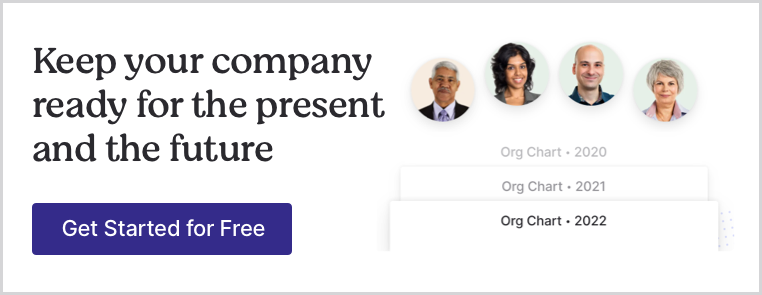How you onboard a new hire sets the tone for that employee’s experience at your company. A good employee onboarding experience is an opportunity to make team members feel comfortable and confident in their new position. A poorly organized orientation, on the other hand, can put the employee on unsure footing and make them question if they made the right decision in joining the company.
This comprehensive new hire checklist will help you conduct the smoothest orientation possible so your employees can immediately feel at home and excited to get to work. It includes all the activities and paperwork you should cover during the new hire’s first days, weeks, and months at the company. There’s even a downloadable checklist at the end so you can keep this essential info at your fingertips.
New Hire Orientation Checklist
Orientation isn’t a one-time experience for an employee, but a process to help them get up to speed over a period of days, weeks, and sometimes even months. A defined onboarding journey can prevent new employees from feeling overwhelmed while simultaneously offering them ongoing support.
Consider spreading orientation out over six months, as seen above, or have it encompass an entire year like the checklist outlined here.
Before day one
Sign essential paperwork.
There’s a substantial amount of paperwork new hires need to sign, much of which can be done before they arrive. Consider sending forms and paperwork (covered in the next section) for them to review, sign, and submit electronically or bring with them on their first day. This also gives new hires time to review the material in depth and ask questions.
Day one
Tour the premises
Take new hires on a quick tour of office spaces they’ll use daily, including:
Restrooms
The kitchen(s)
Parking
Employee mailboxes
Copy centers
Supply closets
Emergency exits
Make introductions
Take time to introduce new hires to other employees, either informally or via a special event like a grout lunch or happy hour—whatever fits well with your culture..
The first few days are great for scheduling meetings with key people, like a new hire’s supervisor or colleagues they’ll be working with on a daily basis.
Review technology
Assign and provide login access to computers, phones, printers, software, and key card systems if you have them.
Review the employee handbook
Even if the employee received the handbook prior to their first day, it may be helpful to discuss the following:
Dress code
Paid time off, vacation, and sick leave policy
Personal conduct
Company culture and values
Working hours and arrival protocols
Organizational structure or hierarchy
Review paperwork
Answer any questions the employee may have about the paperwork they received before their first day, then ensure that they have signed all necessary forms.
Week one
In addition to checking that the employee is settling in, be sure to:
Assign first tasks
Schedule job-specific training
Set goals to be assessed during future evaluations
Review new employee evaluation period, which may include additional coaching or reassignment if necessary
Month one
Get feedback from the employee on the recruiting process, onboarding, and their experience so far
Give feedback to the employee on their work so far
Review the employee’s past and upcoming assignments
Check that payroll and reimbursements are working normally Check that job-specific training is underway
Month three
Review feedback from peers about employee performance
Review feedback from managers
Get the employee’s feedback about their experience with their manager
Give additional feedback to the employee as needed
Month six
Wrap up job-specific training
Conduct a six-month performance review
Set goals for the coming six months
Evaluation period check-in or wrap-up
Year one
Conduct annual performance review
Review feedback from the employee’s peers
Set goals for the coming year
Review and renew the employee’s contract if necessary
Discuss compensation and benefits
New Hire Forms and Paperwork Checklist
When it comes to onboarding new hires, there’s a lot of paperwork. With this list, you can make sure you don’t leave out the most important forms, although you may want to check with legal counsel about additional forms required by your state or local government.
Company employment forms
Job application
While a new hire likely submitted a resume during the application process, having them fill out a job application standardizes the information if needed for later reference.
Offer letter
Contract
Job description and responsibilities
Salary and benefits
Work schedule
Contract duration
Termination conditions
Employment forms required by law
An acceptable form of ID, such as a driver’s license or passport
W-4 or W-9
I-9 Employee Eligibility Verification
State tax forms
Anti-harassment documentation
Direct deposit form
Internal forms
Non-compete agreement
Non-disclosure agreement
Employee handbook
Drug- and alcohol-testing permission
Background check Inventory checklists
Employee benefits forms
Health and life insurance packages
Retirement plan
Reimbursement policies for cell phone plans, vehicle use, etc.
Personal information
Emergency contact information
Health history, pre-existing conditions, allergies, and medications
Downloadable New Hire Checklist
Given all the ground there is to cover, onboarding a new hire might seem like an overwhelming process for those involved. Having a comprehensive checklist on hand eliminates the guesswork and helps you deliver the most seamless orientation experience possible to your employees, which is vital for their future success at the company. This new hire checklist includes everything discussed here on one easypro-reference page. Consider printing out two copies—one for you and one for the employee—so that everyone is literally on the same page about what to expect during onboarding.
